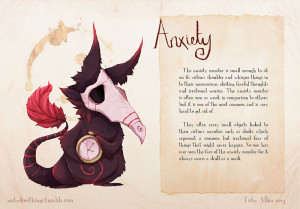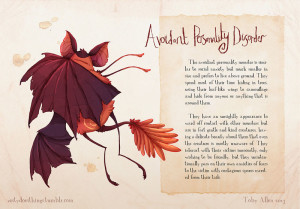 Whether you have experienced anxiety as a niggling sensation in your abdomen or have dealt with an anxiety attack, everybody is impacted by anxiety. It comes in varying forms and will show itself naturally before a transition. However, many people are impacted by anxiety disorders – 1 in 5 in Australians, and it shows itself in Obsessive Compulsive tendencies, Post Traumatic Stress Disorder, Panic Disorder, Social Anxiety, phobias and General Anxiety. While it is easy for people to suggest we ‘get over’ these feelings, feelings of anxiety and anxiety disorders can rarely be so easily overcome whether we are about to sit a big test or perhaps need to step into a shopping centre.
Whether you have experienced anxiety as a niggling sensation in your abdomen or have dealt with an anxiety attack, everybody is impacted by anxiety. It comes in varying forms and will show itself naturally before a transition. However, many people are impacted by anxiety disorders – 1 in 5 in Australians, and it shows itself in Obsessive Compulsive tendencies, Post Traumatic Stress Disorder, Panic Disorder, Social Anxiety, phobias and General Anxiety. While it is easy for people to suggest we ‘get over’ these feelings, feelings of anxiety and anxiety disorders can rarely be so easily overcome whether we are about to sit a big test or perhaps need to step into a shopping centre. 
Symptoms of anxiety include:
-
Shortness of breath
-
Sweating
-
Inability to think logically
-
Feelings of ‘butterflies’ in the stomach
-
A feeling of constriction in the chest
-
Aches and pains, muscle spasms
-
Insomnia
 As someone who lives with an anxiety disorder, I have had to learn that in some ways anxiety will always be an aspect of my life due to the chemical imbalance that it is caused by. However, this is not to say I have to struggle or face it head on every day. Early on in my diagnosis, the battle I waged against anxiety was a 24/7 task, aided by numerous counselling sessions and medication. It was in these early years that I was told about various techniques to handle and manage anxiety in my life.
As someone who lives with an anxiety disorder, I have had to learn that in some ways anxiety will always be an aspect of my life due to the chemical imbalance that it is caused by. However, this is not to say I have to struggle or face it head on every day. Early on in my diagnosis, the battle I waged against anxiety was a 24/7 task, aided by numerous counselling sessions and medication. It was in these early years that I was told about various techniques to handle and manage anxiety in my life.
The implementation of these techniques meant that over time my anxiety decreased and became less of a constant enemy and more of a trained pet I was able to leash at any given moment. Anxiety is still a part of my life, but I find that techniques I was taught to train this ‘pet’ mean it no longer controls my life, and I am able to control it. People will try to control their anxiety in many ways, some healthy and some that will involve self-medication and can hurt them even more so in the future. Here are 7 healthy techniques to manage your own anxiety.
1. Deep breathing
It sounds cliché, but it’s true: deep breathing is a key part of calming yourself when anxiety rises. Count to five slowly as you breathe in and out. This stabilises your heart rate and keeps you from hyperventilating which increases your panic. The increase of oxygen will relax your body and lessen the physical symptoms of the anxiety. Using a paper bag to practice your deep breathing is also beneficial if you have trouble regulating it yourself.
2. Exercise
By going for a jog, going surfing, doing some sprints at a nearby oval or even taking a leisurely walk with the dog, allow yourself to step out of your mind and exercise to alleviate the nervous energy in your body. Observe the environment around you and feel the anxiety leave your body with each step and movement you make. Your anxiety does not control you, you control it.
3. Journal
Anxiety would frequently overwhelm me, causing me to feel ten different emotions at once for varying reasons. It can be hard to understand why we are feeling anxiety and sometimes there will be no logic in it. Writing out your emotions whether in a classic ‘Dear Diary’ format or in the context of a story, a song or poetry can help us to understand and accept our experience. Even if no one else in your vicinity understands your anxiety driven response, your feeling are still valid and real. Express them and remember they are passing. If you are a creative person, draw strength from this strategy.
4. Draw
Drawing is not simply an activity for children, it is a strategy that enables us to release the frustration and fear that anxiety induces. Can’t draw? It doesn’t matter. Sometimes scribbling or doodling patterns will help to ease your physical symptoms and slow your brain. Other times drawing the situation or people you are fearful of and how you will overcome this is therapeutic. A great example of this is the ‘Real Monsters’ project drawn by Toby Allen. [LINK] In order to make his anxiety more normal and manageable, this young man drew it as a monster. What does your anxiety look like? Draw it.
5. Colour in
There is strength to be gained as you spread colour between the lines and control the outcome of an image. Use colours that express your emotions and make something beautiful come out of the nervous tension in your hands. Whether you colour in a children’s book or choose a Mandala or pattern, make the image your own and take control of the situation.
6. Massage
While anxiety is rooted in the brain, it will inevitably come out psychosomatically in our bodies. This may take the form of muscle spasms, a twitch, shaking, headaches and migraines or constant tension. Stretching, seeing a masseuse or asking a friend to massage us is a practical way to relieve the tension and ease our long term experience of anxiety. Even rubbing your hands and arms to ease shaking or tension is a useful way of calming yourself.
7. Practice mindfulness
When you are experiencing an anxiety attack, your brain will feel overwhelmed by thoughts and feelings. They won’t make sense or even be connected with one another, yet the process of anxiety is one that snowballs and seems untameable. When possible, step outside, take a seat, or lie down. Put on soothing music and feel every muscle in your body. Relax them from your toes to your face. Allow yourself to think of calmness and serenity, perhaps even listen to a meditation CD. Make your mind and your body relax before you continue with your day to stop this snowball effect.
Do you experience anxiety? Call Colleen on 0434 337 245 for a FREE 10 minute discussion or go to BOOK ONLINE NOW.
Images shown with permission by Artist Toby Allen .

Leave a Reply